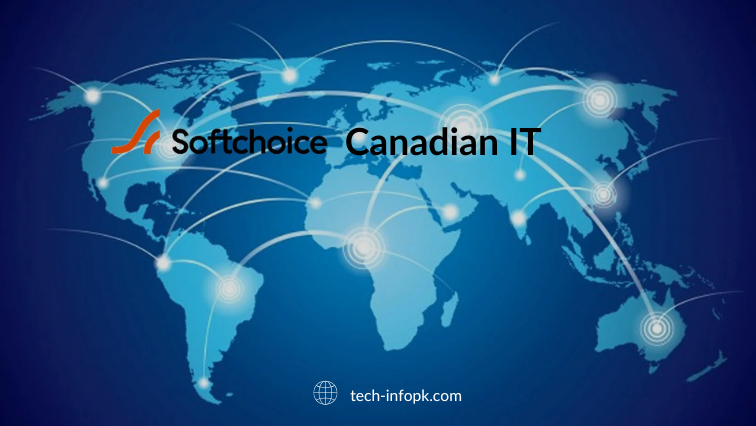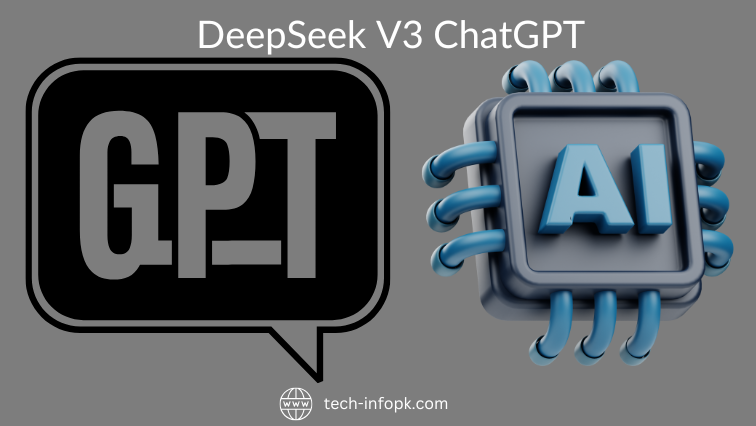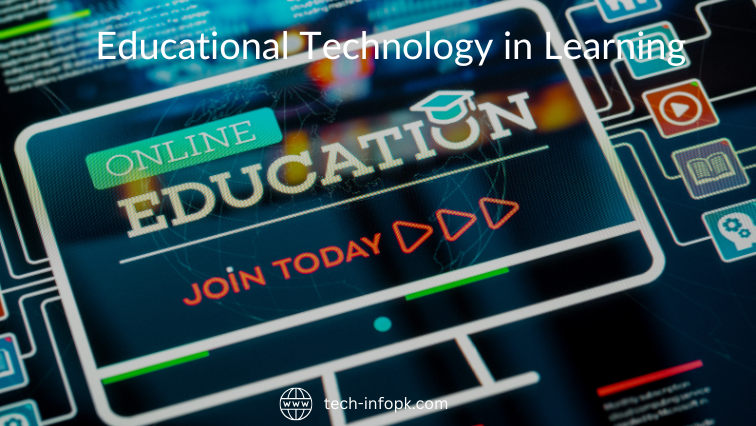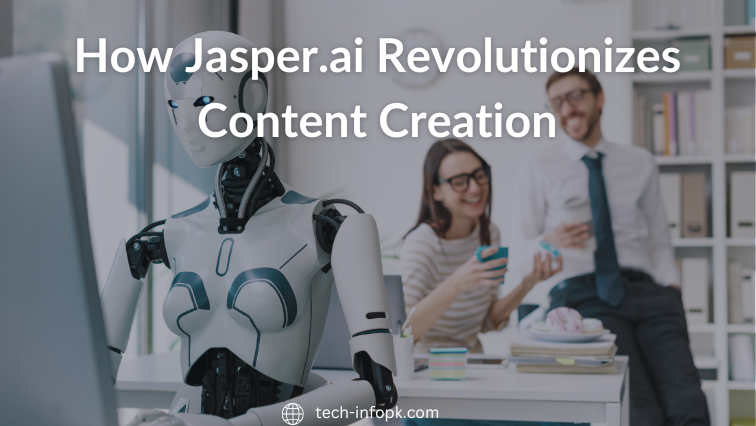Journalism at X Corp Former Wall Street Journal Editor Appointed to Lead Global News Initiative and Enhance Platform

In a move that underscores its ambitions to become a major player in the future of journalism and digital news, X Corp. has taken a significant step forward by hiring John Stoll, a former editor and Detroit bureau chief at The Wall Street Journal. Stoll’s new role, announced during X Corp.’s keynote at CES 2025 in Las Vegas, positions him as the head of X’s news group and partnership team. This pivotal appointment reflects X’s vision to transform its platform into a dynamic hub for journalism, content creation, and global news dissemination. X Corp’s Vision for News and Journalism During the keynote, X Corp. CEO Linda Yaccarino elaborated on the company’s evolving relationship with journalism. She emphasized the platform’s commitment to empowering journalists and content creators by providing innovative tools and monetization opportunities. Yaccarino highlighted that X aims to foster an environment where journalists can thrive creatively and financially, ensuring their contributions are recognized and rewarded. When asked whether X would introduce a dedicated news portal or similar feature, Yaccarino stopped short of providing concrete details. However, she expressed enthusiasm about the opportunities X offers journalists to “explore their craft” and earn a sustainable income through the platform’s unique creator revenue share program. This program enables paid subscribers on X to monetize their content by engaging with Premium X users, rewarding creators whose work drives interaction and engagement. A New Model for Supporting Journalism The concept of paying journalists based on audience engagement is not entirely new. Media outlets like BuzzFeed previously adopted similar strategies by blending hard news with lighter content such as quizzes, gossip, and pop culture stories. While such models demonstrated initial success, they often fell victim to algorithmic shifts by platforms like Facebook, which significantly impacted visibility and reach. X, under the ownership of Elon Musk, is also not immune to potential algorithmic changes. Questions linger about how future updates might influence the prominence of news content on the platform, particularly when it comes to traditional outlets. Nonetheless, X appears determined to redefine the landscape of journalism by embracing a model that aligns with the principles of free speech and audience-driven narratives. The Shift from Legacy Media During her keynote, Yaccarino was candid about her views on traditional media, stating, “The future of news is not legacy media.” She criticized legacy media outlets for becoming increasingly niche-focused, catering to specific audiences to meet financial goals. In contrast, X envisions itself as a platform where journalistic curiosity can thrive in a freer, more collaborative environment. Yaccarino described X as a space where users are empowered to drive narratives and engage in meaningful, two-way conversations. She emphasized the platform’s commitment to protected free speech, positioning X as a global stage for authentic storytelling and open dialogue. John Stoll’s Role and Responsibilities Although specifics about John Stoll’s responsibilities at X remain under wraps, his appointment is expected to play a crucial role in expanding the platform’s news offerings on a global scale. Stoll brings extensive experience and credibility to the position, having served as a prominent figure at The Wall Street Journal. His leadership is anticipated to strengthen X’s news initiatives, foster partnerships, and attract journalists and media organizations to the platform. The move to appoint a seasoned journalist like Stoll signifies X’s intent to position itself as a credible and innovative player in the news ecosystem. By leveraging his expertise, the company aims to navigate the complex dynamics of modern journalism and establish a sustainable model for content creation and distribution. A Platform for the Future of Journalism Yaccarino’s remarks at CES reflect X’s ambition to create a platform that prioritizes user engagement and diverse perspectives. Unlike traditional media outlets constrained by legacy structures, X seeks to democratize access to information and provide a platform where journalists and creators can flourish. The emphasis on empowering creators, fostering global partnerships, and supporting journalistic endeavors aligns with the company’s broader mission to redefine the relationship between technology and media. Conclusion The appointment of John Stoll as head of X’s news group and partnership team represents a transformative moment for the platform. By focusing on expanding news content at a global scale, X is positioning itself as a trailblazer in modern journalism, blending traditional reporting values with innovative monetization strategies. Through initiatives like the creator revenue share program and a commitment to free speech, X offers journalists a unique opportunity to thrive in a rapidly evolving media landscape. The platform’s forward-thinking approach challenges the conventions of legacy media, emphasizing inclusivity, user-driven narratives, and global reach. As X continues to build its reputation as a hub for news and journalism, the collaboration between Stoll’s leadership and the company’s strategic vision will likely redefine how information is shared and consumed in the digital age. With its sights set on empowering creators and fostering meaningful dialogue, X is not only reshaping its platform but also setting a new standard for the future of news.
Nvidia Revolutionizes Humanoid Robotics with Imitation Learning via Apple Vision Pro and GR00T Blueprint Technology

In recent years, robotics has emerged as a cornerstone of Nvidia’s meteoric rise, driving its position as a technological leader in artificial intelligence and computing innovation. The announcement of Nvidia’s GR00T humanoid robotics platform in March of last year marked a significant milestone in the field of robotics. It brought together a consortium of industry-leading humanoid robotics companies, including prominent names such as 1X Technologies, Agility Robotics, Aptronics, Boston Dynamics, Figure AI, Fourier Intelligence, Sanctuary AI, and Unitree Robotics. GR00T was celebrated as a pivotal development for humanoid robotics, enabling advancements in efficiency, automation, and practical deployment. At CES, Nvidia CEO Jensen Huang unveiled another transformative dimension of the GR00T platform—Blueprint. This innovative feature is built around the principle of imitation learning, a sophisticated method for teaching robots to acquire new skills by mimicking human actions. Imitation learning is particularly significant for humanoid robots, as their design and functionality are inherently inspired by human form and behavior, making them ideal candidates for this training approach. The introduction of Blueprint redefines how humanoid robots can be trained to perform complex tasks in real-world settings. Understanding Imitation Learning Imitation learning is an intuitive yet highly effective method for educating robots. The process involves a human performing a specific action or series of actions, which the robot then replicates. This approach is especially impactful for systems designed to automate repetitive tasks in environments such as factories and warehouses, where humanoid robots are beginning to gain a foothold. These robots are tailored to execute predefined actions with precision and consistency, transforming traditional workflows with unparalleled efficiency. A crucial element in this paradigm is teleoperation, which allows humans to teach robots remotely. By leveraging teleoperation, human actions can be digitized in real time, enabling robots to practice and perfect these actions in simulated environments before applying them in real-world scenarios. This seamless integration of human input and robotic execution enhances the training process, reducing the time and resources required for deployment. Apple Vision Pro Meets GR00T Blueprint With the introduction of GR00T Blueprint, Nvidia has taken imitation learning to new heights by incorporating Apple’s cutting-edge Vision Pro technology. This synergy allows users to create digital twins of human actions through the Vision Pro, capturing them in precise detail. The digital twin serves as a template for robots to repeatedly execute the action within a simulation, ensuring accuracy and consistency. This process bridges the gap between human expertise and robotic performance, making the adoption of humanoid robots more accessible and impactful across industries. Blueprint represents a leap forward in robotics training, offering unmatched precision and scalability. By digitizing human actions in high-fidelity simulations, Nvidia empowers humanoid robots to adapt to a diverse range of tasks, from assembly line operations to complex logistical challenges. This capability is instrumental in deploying robots in sectors such as manufacturing, logistics, and even healthcare, where precision and adaptability are paramount. Transforming the Future of Robotics Nvidia’s GR00T Blueprint, powered by Vision Pro, exemplifies the company’s commitment to pushing the boundaries of artificial intelligence and robotics. This integration not only enhances the capabilities of humanoid robots but also sets the stage for their widespread adoption. By focusing on intuitive training methodologies like imitation learning and leveraging advanced technologies such as digital twins, Nvidia is driving the next wave of innovation in the robotics industry. As humanoid robots become increasingly prevalent in industrial and commercial applications, tools like GR00T Blueprint will play a critical role in their success. Nvidia’s forward-thinking approach ensures that these robots are not just machines but intelligent systems capable of learning and evolving alongside human counterparts. Conclusion Nvidia’s unveiling of GR00T Blueprint at CES represents a monumental step in the evolution of humanoid robotics. By combining imitation learning with the immersive capabilities of Apple Vision Pro, Nvidia is enabling robots to seamlessly mimic human actions with unmatched precision and efficiency. This groundbreaking approach is poised to revolutionize industries reliant on automation, from manufacturing to logistics, and beyond. The adoption of teleoperation and digital twins through Vision Pro empowers robots to perform complex tasks with unparalleled accuracy, bridging the gap between human expertise and robotic execution. As Nvidia continues to innovate, GR00T Blueprint will undoubtedly serve as a catalyst for transforming the robotics landscape, solidifying Nvidia’s role as a trailblazer in artificial intelligence and robotics. This strategic alignment of cutting-edge technologies reaffirms Nvidia’s dedication to shaping the future of automation, ensuring that humanoid robots are not only smarter but also more adaptable to the dynamic demands of modern industries.
Microsoft Allocates $80 Billion Advanced AI Data Centers to Shape the Future of Artificial Intelligence

Microsoft, a global leader in technology innovation Microsoft, a global leader in technology innovation has unveiled an ambitious plan to allocate a staggering $80 billion in fiscal year 2025 to establish state-of-the-art data centers tailored specifically for artificial intelligence workloads. This strategic move underscores Microsoft’s commitment to spearheading advancements in AI and cloud-based technologies while meeting the surging demand for AI-powered solutions across industries worldwide. In a detailed announcement through its official blog, Microsoft revealed that these AI-centric data centers will play a pivotal role in training sophisticated AI models and deploying cutting-edge applications globally. Highlighting the scale of this initiative, Brad Smith, Microsoft’s Vice Chair and President, disclosed that more than half of the $80 billion investment would be directed towards facilities within the United States. This fiscal year, ending in June 2025, is expected to set a precedent in AI-driven infrastructure development. “As we gaze into the future, it’s evident that artificial intelligence is emerging as a transformative General Purpose Technology (GPT),” Smith emphasized in the blog. “AI has the potential to catalyze innovation and amplify productivity across every economic sector. The United States is uniquely positioned to lead this technological revolution, provided it capitalizes on its inherent strengths and fosters robust international partnerships.” Microsoft’s long-standing dedication to AI innovation has been evident in its collaborations and projects, including its notable partnership with Open AI. Earlier this year, reports surfaced regarding Microsoft and Open AI exploring plans for an ambitious data center project named “Stargate.” This proposed facility, featuring an AI supercomputer of unparalleled capabilities, The proposed facility was anticipated to demand an extraordinary financial commitment, with initial estimates suggesting an investment surpassing a staggering $100 billion. This immense funding requirement underscores the scale and complexity of the project, reflecting the significant resources necessary to construct and operationalize a cutting-edge data center equipped with an AI supercomputer of unparalleled capabilities. Such an ambitious undertaking highlights the ever-growing computational needs of artificial intelligence and the monumental efforts required to build infrastructure that can support its transformative potential on a global scale. However, the dynamics of their relationship took an intriguing turn later in the year when Microsoft officially referred to Open AI as a “competitor” in an SEC filing. This declaration underscored the competitive landscape of the rapidly evolving AI domain. AI-focused data centers The scale and complexity of these AI-focused data centers reflect the increasing computational demands of modern AI systems. These centers will not only support the training of intricate AI models but also facilitate the deployment of scalable applications that leverage AI’s transformative potential. However, this significant leap in technological infrastructure comes with its challenges. Experts anticipate a dramatic increase in electricity consumption due to AI operations, potentially leading to power shortages for data centers. Such challenges highlight the need for sustainable practices and innovative energy solutions to ensure the uninterrupted growth of AI capabilities. This monumental investment in data centers reaffirms Microsoft’s strategy to strengthen its position as a leader in AI and cloud services. By prioritizing the development of advanced infrastructure, the company aims to empower businesses, governments, and developers to harness the transformative power of AI effectively. The move also reflects Microsoft’s broader vision of shaping a future where AI drives meaningful economic and societal progress. The $80 billion initiative is expected to fuel Microsoft’s efforts in addressing the complex demands of the digital age, creating an infrastructure that not only supports AI innovation but also fosters global collaboration. This endeavor aligns with Microsoft’s broader mission of leveraging technology to bridge gaps and create opportunities for communities worldwide. As the fiscal year unfolds, the tech giant’s commitment to AI-centric growth and innovation will undoubtedly leave a lasting impact on the technological landscape. This groundbreaking investment serves as a testament to the growing importance of artificial intelligence and the infrastructure required to support its expansive possibilities. By committing substantial resources to build AI-specific data centers, Microsoft is not just meeting the present demands of the AI revolution—it is laying the groundwork for the future of global innovation. Conclusion Microsoft’s monumental decision to allocate $80 billion in fiscal year 2025 for the development of AI-focused data centers signifies a historic step in advancing the technological landscape. By committing such vast resources, the tech giant is not only addressing the rapidly increasing demands of artificial intelligence workloads but also positioning itself as a global leader in AI and cloud innovation. These data centers, designed to support the training of sophisticated AI models and deploy advanced cloud-based applications worldwide, are set to redefine the boundaries of computational power and operational efficiency. This strategic investment aligns with Microsoft’s vision of leveraging artificial intelligence to drive productivity, innovation, and economic growth across industries. With over half of this funding earmarked for the United States, the company emphasizes its dedication to fostering domestic technological leadership while strengthening its global presence through international partnerships. Such initiatives underscore the transformative potential of AI to revolutionize sectors ranging from healthcare and education to finance and manufacturing, making it a cornerstone of future technological progress. The estimated $100 billion investment in the Stargate AI supercomputer project further highlights Microsoft’s ambitious pursuit of pioneering infrastructure capable of addressing the complex and evolving needs of AI. These efforts will not only solidify Microsoft’s dominance in the tech sector but also serve as a catalyst for widespread advancements in AI technologies that will shape the future of businesses and societies alike. As artificial intelligence continues to grow in significance, the need for robust, sustainable, and energy-efficient data center solutions becomes paramount. While challenges such as power consumption and environmental impact must be addressed, Microsoft’s unwavering commitment to innovation and strategic partnerships places it at the forefront of this new era. By building a foundation that supports scalable AI technologies, Microsoft is not just adapting to the demands of today but also setting the stage for tomorrow’s breakthroughs, ensuring its legacy as a transformative force in the digital age.
WWT Announces Strategic $1.8 Billion CAD Canadian IT Softchoice

Jim Kavanaugh, co-founder and CEO of WWT, highlighted the profound impact Softchoice has had on the IT sector over its illustrious 35-year history. “Softchoice has consistently been a trailblazer, shaping the IT industry with its innovative solutions and forward-thinking approach,” Kavanaugh stated. “This acquisition represents a perfect synergy with WWT’s overarching vision of empowering businesses to achieve their digital transformation goals. Together, we aim to deliver unmatched value, offering cutting-edge technology and comprehensive services tailored to the evolving needs of our diverse client base. On Tuesday, World Wide Technology (WWT), a leading tech services firm headquartered in St. Louis, revealed its agreement to acquire Canadian IT solutions provider Softchoice in an all-cash transaction valued at $1.8 billion CAD (approximately $1.25 billion USD). This high-stakes acquisition not only highlights WWT’s commitment to expanding its technological portfolio but also underscores its ambition to solidify its position as a global leader in IT services and digital transformation. Details of the Acquisition Deal The acquisition agreement, which has already secured unanimous approval from Softchoice’s board of directors, is still subject to several regulatory steps. These include shareholder voting, court approvals, and standard closing conditions. Both companies anticipate the deal’s completion by late Q1 or early Q2 of 2025. However, if the agreement fails to materialize, Softchoice may be liable for a termination fee of $49 million CAD (approximately $34 million USD). Notably, Softchoice’s board retains the right to entertain alternative offers, suggesting that the deal could potentially face competing bids. Nonetheless, this acquisition represents a pivotal moment for WWT, which seeks to leverage Softchoice’s expertise to bolster its already expansive product offerings. Enhancing WWT’s Capabilities with Softchoice Strengths WWT’s co-founder and CEO, Jim Kavanaugh, emphasized the complementary nature of Softchoice’s strengths in software, cloud computing, cybersecurity, and artificial intelligence (AI). “By integrating Softchoice’s extensive expertise in cloud computing, cybersecurity, and AI-driven solutions, WWT seeks to fortify its position as a global leader in IT services. This collaboration not only enhances WWT’s capabilities but also reinforces its commitment to pioneering advancements that enable organizations to thrive in an increasingly competitive and technology-driven world. The deal reflects a shared mission to redefine the future of IT services, paving the way for innovative solutions that address the multifaceted challenges of the digital era.Softchoice established in 1989 by David Holgate and Jone Panavas, began as a provider of hard-to-find enterprise software solutions. Over the decades, the company evolved into a major player in North America’s tech services sector. Its extensive offerings now encompass software solutions, cloud computing platforms, and cybersecurity services. Softchoice Financial and Historical Performance Softchoice trajectory over the years highlights its impressive growth. The company was acquired by private equity firm Birch Hill in 2013 for $412 million CAD ($800 million USD). Financially, the firm has demonstrated robust performance. In Q3 2024, Softchoice reported a 10% year-over-year growth in gross profit and an 8% rise in net income, driven by an expanding customer base. Its adjusted EBITDA for the quarter reached $23.2 million CAD, reflecting a 2.2% increase from the previous year. Such consistent financial health underscores Softchoice’s attractiveness as an acquisition target. WWT’s offer represents a 62% return on Softchoice’s IPO price, showcasing the value shareholders stand to gain should the acquisition proceed. Once finalized, Softchoice will delist from the TSX, marking the end of its journey as a public company and the beginning of a transformative partnership with WWT. Strategic Synergies and Future Opportunities Softchoice’s president and CEO, Andrew Caprara, expressed optimism about the merger’s potential. “Joining forces with WWT opens exciting new avenues for growth and innovation,” Caprara stated. “WWT’s scale, global reach, and extensive customer base, combined with our focus on software and cloud solutions, create a unique opportunity to deliver cutting-edge services to clients across North America and beyond.” The acquisition also aligns with WWT’s history of strategic growth through acquisitions. Founded in 1990 by Jim Kavanaugh and David Steward, WWT has built a reputation for delivering innovative solutions in cloud computing, data center infrastructure, and application development. With annual revenues exceeding $20 billion and a workforce of over 10,000, WWT is well-positioned to integrate Softchoice’s capabilities seamlessly into its operations. Softchoice will become WWT’s third acquisition, following the purchases of Baltimore-based Performance Technology Group in 2010 and software company Asynchrony in 2015. These acquisitions demonstrate WWT’s calculated approach to expanding its technological footprint. A Transformative Deal in the IT Industry This acquisition marks a significant milestone in the tech services sector, particularly as it reflects the growing importance of cloud computing and cybersecurity in today’s digital economy. Softchoice’s established presence in the North American mid-market, coupled with its expertise in software and cloud solutions, makes it a valuable addition to WWT’s robust portfolio. Moreover, the deal signifies a broader industry trend of consolidation, where leading tech firms acquire specialized players to bolster their offerings and remain competitive. For startups and mid-sized IT providers, this acquisition reinforces the importance of innovation and niche expertise in attracting major players. Conclusion The acquisition of Softchoice by World Wide Technology (WWT) is far more than a conventional business transaction; it represents a thoughtfully designed strategic alignment that promises to redefine the future trajectory of IT services. This collaboration underscores WWT’s steadfast commitment to remaining at the forefront of technological innovation, ensuring its clients receive end-to-end digital transformation solutions tailored to the ever-evolving demands of the modern business landscape. For Softchoice, this partnership heralds an exciting chapter of growth, presenting new opportunities to scale operations, enhance service offerings, and significantly broaden its influence in the global technology market. As the IT sector continues to evolve at a rapid pace, strategic partnerships and acquisitions like this play a pivotal role in shaping the industry’s direction. They serve as catalysts for innovation, fostering the development of cutting-edge solutions that address increasingly complex business challenges. The integration of WWT’s extensive infrastructure expertise with Softchoice’s strengths in cloud computing, cybersecurity, and artificial intelligence provides a comprehensive platform to meet diverse client needs while paving the way for technological
Essential Cybersecurity Startup Embrace New Year 2025

The start of a new year offers a unique opportunity for startups to reinforce their commitment to cybersecurity. In today’s rapidly evolving digital landscape, cyber threats are escalating in both sophistication and frequency. To ensure the safety of company assets and data, startups must adopt proactive measures. The following resolutions outline crucial steps that can fortify a company’s digital defenses. Securely Store Company Passwords A significant number of cyberattacks stem from poor password practices, such as weak passwords or repeated use of the same credentials across platforms. Hackers exploit such vulnerabilities through a tactic called credential stuffing, where they use compromised credentials from one account to access others. Startups should prioritize adopting password management tools. These tools are designed to securely store company passwords while assisting employees in creating complex, unique passwords for every account. Password managers eliminate the stress of remembering numerous credentials and significantly reduce the risk of breaches caused by reused passwords. The evolution of passwordless technologies, such as passkeys resistant to phishing attacks, is also worth exploring. Transitioning to such systems can help businesses achieve higher security standards and protect sensitive accounts against unauthorized access. Implement Multi-Factor Authentication (MFA) Passwords alone no longer suffice to safeguard critical accounts. In 2024, cybercriminals leveraged stolen credentials to compromise at least 1 billion personal records, exposing businesses to immense risks. Multi-factor authentication (MFA) has emerged as a robust layer of protection. MFA requires users to verify their identity using a secondary method, such as a one-time code or biometric input, in addition to a password. This dual-layer authentication system significantly reduces the likelihood of unauthorized account access. For example, leading cloud computing company Snowflake could have avoided data theft involving corporate giants such as AT&T by enforcing strict MFA protocols. Security experts recommend authenticator apps for generating secure login codes, as SMS-based codes can sometimes be intercepted. Ensuring all employees adopt MFA for both corporate and personal accounts is a critical step in fortifying cybersecurity frameworks. Regularly Update Software Ensuring that software is regularly updated is an essential practice for startups. With their limited resources and smaller security frameworks compared to larger corporations, startups are frequently perceived as vulnerable targets by cybercriminals who exploit outdated systems. These criminals often capitalize on unpatched vulnerabilities, leading to data breaches, ransomware attacks, and other costly cyber incidents. By keeping software up to date, startups can significantly reduce the risk of such threats, ensuring that they remain protected against known vulnerabilities and exploits. Many of 2024 most damaging breaches occurred due to unpatched vulnerabilities in third-party software. Hackers specifically target legacy enterprise systems and file-transfer tools, as they often store sensitive company data and remain susceptible to attacks. Startups must establish protocols for promptly installing updates and applying security patches. Automated update systems can streamline this process, ensuring all software is fortified against known vulnerabilities. Addressing unpatched software reduces the risk of exploitation through zero-day vulnerabilities and improves overall system resilience. Backup Company Data Ransomware attacks reached unprecedented levels in 2024, with businesses paying enormous sums to regain access to their data or prevent its public release. Maintaining a comprehensive data backup strategy is an indispensable line of defense against ransomware and other data-theft attacks. Startups should implement encrypted, offsite backups to safeguard critical data from both cyberattacks and system failures. Regularly scheduled backups ensure the organization can recover from disruptions with minimal data loss. It’s equally important to secure backups against potential hacking attempts, as cybercriminals often target backup systems to neutralize recovery options. Vigilance Against Fraudulent Calls While phishing emails remain a prominent attack vector, hackers are increasingly leveraging social engineering through fraudulent phone calls. High-profile breaches, such as MGM Resorts’ $100 million incident in 2023, have demonstrated the devastating impact of this tactic. Employees should be trained to remain skeptical of unexpected calls, even from seemingly legitimate contacts. Never share sensitive information over the phone unless the caller’s identity is verified through an independent communication channel. Establishing strict verification protocols for phone-based interactions can minimize the risk of such attacks. Foster a Culture of Transparency No cybersecurity strategy guarantees immunity from attacks. In the unfortunate event of a breach, transparency can significantly influence recovery outcomes. Being upfront about incidents allows customers and partners to take precautionary measures, minimizing potential fallout. Additionally, sharing detailed information about the attack with the broader community can help others strengthen their defenses and prevent similar incidents. A transparent approach builds trust and demonstrates accountability, essential for maintaining long-term relationships with stakeholders. Final Thoughts In today’s digital era, cybersecurity has evolved beyond being merely an optional consideration; it is now a critical requirement for any business aiming for long-term success. Startups, in particular, must prioritize robust cybersecurity measures, as their ability to safeguard sensitive data not only protects their operations but also helps maintain the trust of their clients, partners, and investors. Proactively addressing cybersecurity challenges ensures that startups can focus on growth and innovation without being derailed by preventable security breaches. By securely managing passwords, implementing multi-factor authentication, keeping software updated, backing up data, being cautious of social engineering tactics, and fostering transparency, startups can build a strong foundation for their digital security. These New Year’s resolutions are not merely short-term goals but ongoing commitments that can shield your company from escalating cyber threats. As the cybersecurity landscape continues to evolve, staying vigilant and proactive will ensure your startup thrives in an increasingly connected world. Embrace these strategies to safeguard your startup’s future while fostering trust with customers and partners. Conclusion In the ever-evolving landscape of digital security, embracing robust cybersecurity practices is not just a resolution for startups—it’s a necessity. Startups must prioritize a multi-faceted approach to protect their data, assets, and customer trust. From securely storing company passwords using advanced password management tools to implementing multi-factor authentication for stronger access control, these measures provide critical barriers against unauthorized access. Regularly updating software to address vulnerabilities, coupled with encrypted data backups, ensures resilience against the rising tide of ransomware attacks. Equally important is
Volocopter Aircraft eVTOL Neom Bold Leap Air Mobility files for bankruptcy

Volocopter Secures $182 Million in Series E Funding to Propel eVTOL Development and Urban Air Mobility Ecosystem Volocopter, an innovative German startup specializing in the development of electric vertical takeoff and landing (eVTOL) vehicles, has announced a significant milestone in its funding journey. The company has raised an additional $182 million in the second tranche of its Series E funding round, complementing the $170 million it secured earlier in March. This brings the total Series E funding to an impressive $352 million, maintaining the startup’s post-money valuation at $1.87 billion. Pioneering the Future of Air Taxis with Velocity Volocopter is focused on advancing its flagship two-seater air taxi, the VoloCity, a cutting-edge eVTOL aircraft designed to redefine urban transportation. Currently undergoing rigorous testing, the VoloCity is being developed to meet stringent requirements set by the European Union Aviation Safety Agency (EASA). The recent funding will bolster Volocopter’s extensive testing program, which aims to achieve the Special Condition for small category VTOL aircraft certification. Certification is a critical prerequisite for commercialization, and Volocopter has set ambitious timelines. The company anticipates obtaining certification by the second half of 2023, with plans to launch its initial revenue-generating air taxi services in 2024. Achievements and Progress Toward Certification Volocopter has already achieved two significant regulatory milestones in its journey toward full type certification. In 2019, it received Design Organisation Approval from EASA, and in 2021, it secured Production Organisation Approval. These approvals are essential steps toward launching the VoloCity commercially, demonstrating Volocopter’s commitment to meeting the highest standards of safety and innovation. Neom, the visionary smart city project located in Saudi Arabia’s Tabuk Province, has taken a significant step toward revolutionizing urban air mobility by placing an order for 15 Volocopter aircraft. This strategic move underscores Neom’s commitment to establishing a state-of-the-art transportation ecosystem. The ordered aircraft are expected to play a pivotal role in Neom’s broader mobility plans, with initial flight operations anticipated to commence within the next one to two years. By integrating these cutting-edge eVTOL (electric vertical takeoff and landing) vehicles, Neom aims to create a seamless, sustainable, and technologically advanced air mobility network that aligns with its vision of a connected and futuristic urban environment. Building the Urban Air Mobility Ecosystem The additional funds from the Series E round will not only support the certification process but also help establish a robust ecosystem for urban air mobility (UAM). This includes the development of necessary infrastructure, integration with existing transportation networks, and raising public awareness about the benefits and safety of eVTOL technology. According to a Volocopter spokesperson, the company aims to be operationally ready as soon as certification is granted. “First commercial operations will consist of a small fleet of VoloCity air taxis operating on select routes with paying customers,” shared Helena Treeck, Volocopter’s Head of PR. “Over time, we plan to expand the network of routes to provide more value to our customers, including significant time savings, service predictability, and, of course, the unique experience of flying over urban landscapes.” Successful Public Demonstrations and Market Launch Planning Earlier this month, Volocopter achieved another milestone by conducting its first crewed public test flight at Rome’s Fiumicino Airport. The demonstration included showcasing the VoloIQ digital platform, an advanced tool designed to support the entire eVTOL operation lifecycle. From customer bookings to real-time flight monitoring, VoloIQ aims to streamline air taxi services, making them accessible and efficient. Rome is among the leading candidates for Volocopter’s market launch, but the company is also exploring other strategic locations, including Singapore, Paris, and Neom, a futuristic smart city under development in Saudi Arabia. Each of these cities offers unique opportunities for early adoption of urban air mobility solutions. Strategic Investments and Global Partnerships Neom emerged as a lead investor in Volocopter’s latest funding round, reflecting its vision of incorporating advanced mobility solutions into its infrastructure. The partnership between Neom and Volocopter was formalized last December through the creation of a joint venture. This collaboration focuses on integrating the VoloCity air taxi and the VoloDrone, a heavy-lifting electric drone, into Neom’s comprehensive mobility systems. Neom has already placed an order for 15 Volocopter aircraft, with plans to initiate flight operations within the next one to two years. This move underscores Neom’s ambition to establish itself as a global leader in sustainable and connected urban mobility. Volocopter’s strategic alliances extend beyond Neom. The company has formed a joint venture with Geely Holding, a leading automotive group in China, to bring urban air mobility to the Chinese market. As part of the partnership, Geely has committed to purchasing 150 Volocopter aircraft and will assist with local production. This collaboration positions Volocopter to capitalize on the immense potential of the Chinese UAM market, which is expected to play a pivotal role in the global adoption of eVTOL technology. Looking Ahead: A Future of Sustainable Urban Mobility Volocopter’s continued success in securing funding and building strategic partnerships underscores its leadership in the eVTOL industry. With a clear roadmap for certification, robust testing protocols, and a growing network of global partners, the company is poised to revolutionize urban transportation. The introduction of the VoloCity air taxi promises to redefine mobility by offering a sustainable, efficient, and innovative alternative to traditional transportation methods. As Volocopter works toward its goal of launching commercial services, the world eagerly anticipates the transformation of urban travel, where air taxis become an integral part of city life. In conclusion, Neom’s significant investment in 15 Volocopter aircraft symbolizes a groundbreaking shift in the evolution of urban air mobility, underscoring the city’s ambition to lead the world in smart, sustainable, and innovative transportation solutions. By incorporating these cutting-edge electric vertical takeoff and landing (eVTOL) vehicles into its advanced urban infrastructure, Neom aims to redefine the future of commuting, offering not only an eco-friendly alternative to conventional transportation but also a seamless and efficient travel experience that prioritizes time savings and convenience. This bold move highlights Neom’s unwavering commitment to sustainability and technological innovation, aligning perfectly with its vision
Analyzing the Intricacies of AI Model Misidentification DeepSeek V3, ChatGPT, and the Challenges of Data Contamination in Generative AI Systems

In the competitive world of artificial intelligence, the release of groundbreaking models is often accompanied by scrutiny and intrigue. Recently, DeepSeek, a well-funded Chinese AI laboratory, unveiled its latest creation, DeepSeek V3, an “open” AI model that has garnered attention for outperforming many rivals in popular benchmarks. This large yet efficient model is designed to excel in text-based tasks, including coding, content generation, and essay writing. However, a peculiar issue has emerged — DeepSeek V3 seems to mistakenly identify itself as OpenAI’s ChatGPT. The Phenomenon of Misidentification DeepSeek V3’s ChatGPT A series of tests and observations, including posts on social platforms like X (formerly Twitter), reveal that DeepSeek V3 often claims to be ChatGPT, specifically identifying itself as OpenAI’s GPT-4 model released in 2023. In 5 out of 8 test scenarios, the model insisted it was ChatGPT (v4), while correctly identifying itself as DeepSeek V3 in only three instances. This misidentification extends beyond mere self-referencing. When asked for details about DeepSeek’s API, the model reportedly provides instructions for OpenAI’s API instead. Furthermore, DeepSeek V3 reproduces some of the same jokes and punchlines as GPT-4, sparking discussions about the potential overlap in their training data. Exploring the Root Cause Understanding this phenomenon requires a closer look at the architecture and training methodologies of generative AI models like ChatGPT and DeepSeek V3. These systems are essentially statistical engines trained on massive datasets. By analyzing billions of examples, they learn patterns and correlations to predict the next sequence of text based on a given prompt. The peculiar behavior of DeepSeek V3 could stem from its training data. While DeepSeek has not disclosed specific details about the datasets used, the presence of text generated by ChatGPT or GPT-4 in public datasets could explain this overlap. If such data were included in DeepSeek V3’s training set, the model might have inadvertently memorized GPT-4’s outputs and begun replicating them, including the self-identification patterns. Challenges of AI Training Data Contamination The issue of AI models misidentifying themselves or providing incorrect references highlights a broader challenge in the AI industry: training data contamination. As the internet increasingly becomes saturated with AI-generated content, filtering and curating high-quality training data has become more difficult. By some estimates, 90% of the web could consist of AI-generated content by 2026. This flood of AI-created material, often referred to as “AI slop,” complicates the training of new models. Content farms, bots on social media platforms, and automated tools generating clickbait contribute to this growing problem. As a result, even rigorous dataset curation efforts may inadvertently include AI outputs, leading to situations like the one observed with DeepSeek V3. Ethical and Technical Implications Training AI models on outputs from rival systems raises ethical and technical concerns. Mike Cook, a research fellow at King’s College London specializing in AI, likens this practice to “taking a photocopy of a photocopy.” He explains that each iteration loses more detail and connection to reality, potentially degrading the quality of the model’s predictions and exacerbating inaccuracies. Furthermore, this approach might breach the terms of service of the original AI systems. OpenAI, for example, explicitly prohibits the use of its products’ outputs to develop competing models. While it remains unclear whether DeepSeek intentionally used ChatGPT outputs in training, the possibility underscores the need for greater transparency in dataset sourcing. Responses from Industry Stakeholders Neither OpenAI nor DeepSeek has issued official statements regarding the situation. However, OpenAI’s CEO, Sam Altman, appeared to comment indirectly on the matter, emphasizing the challenges of true innovation in AI development. when you don’t know if it will work.” This sentiment underscores a broader industry concern about the balance between leveraging existing technologies and fostering original breakthroughs. Broader Implications for AI Development DeepSeek V3 is not alone in misidentifying itself. Other prominent models, such as Google’s Gemini, have exhibited similar behavior, sometimes claiming to be competing systems. For instance, Gemini has reportedly identified itself as Baidu’s Wenxinyiyan chatbot when prompted in Mandarin. These incidents point to a deeper systemic issue: the pervasive influence of AI-generated content on model training. Without effective measures to filter and validate training data, AI systems risk becoming less reliable and more prone to errors. Cost-Saving vs Quality in AI Development Heidy Khlaaf, Chief AI Scientist at the nonprofit AI Now Institute, highlights the appeal of cost-saving strategies in AI development. By “distilling” knowledge from existing models, developers can significantly reduce training costs. However, this approach is not without risks. Khlaaf explains that distillation from models like GPT-4 might lead to outputs that mirror OpenAI’s style and content, raising questions about originality and quality. Even accidental exposure to GPT-4 data during training could result in a model like DeepSeek V3 exhibiting behavior reminiscent of ChatGPT. While such overlap might enhance certain capabilities, it also increases the likelihood of perpetuating existing biases and inaccuracies in the original data. Addressing the Challenges The industry must adopt robust strategies to mitigate these challenges. Transparency in data sourcing, adherence to ethical guidelines, and investment in advanced data filtering techniques are essential. Collaboration between AI companies, policymakers, and researchers can help establish standards that promote innovation while safeguarding quality and integrity. The Allure of Imitation The appeal of copying lies in its relative simplicity. Once a model like OpenAI’s GPT-4 proves its effectiveness, competitors are naturally drawn to emulate its architecture, training methodologies, or functionality. By mimicking proven strategies, organizations can save time, resources, and effort that would otherwise be required to build a model from scratch. This approach often results in faster deployment and lower risk of failure, making it an attractive proposition for firms looking to capitalize on the booming AI market. However, this method is not without significant drawbacks. While replication might yield short-term benefits, it fails to push the boundaries of what AI technology can achieve. It creates a cycle of redundancy, where AI models compete not on originality or utility but on marginally enhanced versions of the same fundamental design. This not only limits the scope of innovation but also creates
Educational Technology in Learning

Educational Technology Educational technology, commonly referred to as EdTech, is reshaping how education is delivered and consumed across the globe. By integrating technology into teaching and learning processes, educators are creating more dynamic, engaging, and effective educational experiences. In this article, we delve deeply into educational technology, exploring its innovations, challenges, and the promising future it offers. The Evolution of Educational Technology Educational technology has its roots in early teaching tools, such as chalkboards and printed textbooks. With the advent of computers in the late 20th century, a new wave of digital learning began, leading to significant advancements in how students access and interact with educational content. From interactive software to online courses, technology has consistently pushed the boundaries of traditional classroom learning. The introduction of the internet marked a pivotal moment for EdTech. Suddenly, students could access vast amounts of information and resources from anywhere in the world. E-learning platforms emerged, offering courses, tutorials, and certifications online. This shift democratized education, enabling learners in remote areas to access high-quality instruction that was previously unavailable to them. Key Innovations in Educational Technology One of the most significant developments in EdTech is the use of artificial intelligence (AI) in personalized learning. AI-powered platforms analyze students’ strengths, weaknesses, and learning styles to provide tailored content. This personalized approach ensures that learners progress at their own pace, improving retention and engagement. Virtual Reality (VR) and Augmented Reality (AR) are transforming education by creating immersive learning environments. For instance, students can explore historical sites in VR or perform virtual lab experiments in AR. These technologies enhance experiential learning, making abstract concepts tangible and understandable. Gamification is another innovative strategy in EdTech. By incorporating game-like elements such as points, badges, and leaderboards, educators motivate students to engage more actively with learning materials. Gamification fosters competition and collaboration, creating a more interactive educational experience. The Role of EdTech in Remote Learning The COVID-19 pandemic underscored the importance of educational technology in facilitating remote learning. Schools and universities worldwide shifted to online platforms, leveraging video conferencing tools, learning management systems, and digital collaboration platforms. This transition highlighted both the potential and challenges of EdTech. Remote learning tools allowed educators to continue teaching despite lockdowns. However, it also exposed disparities in access to technology. Students without reliable internet connections or devices faced significant obstacles, emphasizing the need for more inclusive EdTech solutions. Benefits of Educational Technology Educational technology offers numerous benefits for students and educators. For students, it provides access to diverse learning resources, enabling self-paced and self-directed learning. Digital platforms often include multimedia content, such as videos, animations, and interactive quizzes, which enhance understanding and retention. For educators, technology simplifies administrative tasks, such as grading and attendance tracking, allowing them to focus more on teaching. EdTech also facilitates professional development through online courses and webinars, helping teachers stay updated with the latest pedagogical strategies. Challenges in Implementing EdTech Despite its advantages, integrating educational technology into schools and institutions is not without challenges. One major issue is the digital divide. In many regions, access to technology is limited, creating inequalities in educational opportunities. Addressing this divide requires significant investments in infrastructure and affordability. Another challenge is teacher readiness. Many educators lack the skills or confidence to effectively use EdTech tools. Providing comprehensive training and support is crucial to ensure that technology enhances, rather than hinders, the learning experience. Privacy and data security are also significant concerns. EdTech platforms collect vast amounts of data about students and educators. Ensuring that this data is stored securely and used ethically is critical to maintaining trust and protecting users. The Future of Educational Technology The future of EdTech looks promising, with advancements in technology continuing to create new opportunities for learning. Artificial intelligence is expected to play an even greater role, with intelligent tutors providing instant feedback and support to students. Similarly, VR and AR will likely become more accessible, further enriching learning experiences. Blockchain technology could revolutionize credentialing and certification. By securely recording academic achievements, blockchain ensures that credentials are verifiable and tamper-proof. This innovation could streamline the process of verifying qualifications for employers and institutions. The integration of 5G networks will enhance the accessibility and performance of EdTech platforms. Faster internet speeds will enable smoother video streaming, real-time interactions, and more robust online learning environments, even in remote areas. EdTech in Developing Countries Educational technology has immense potential to bridge educational gaps in developing countries. Mobile learning, for instance, allows students in rural areas to access educational content via smartphones. Initiatives like One Laptop per Child (OLPC) aim to provide affordable devices to underserved communities. However, challenges such as infrastructure limitations, high costs, and cultural barriers must be addressed. Partnerships between governments, private companies, and non-profit organizations are crucial to making EdTech solutions more accessible and sustainable in these regions. The Role of Policy and Regulation Effective policies and regulations are essential for the successful implementation of educational technology. Governments and educational institutions must establish frameworks that promote innovation while ensuring equity and inclusivity. Funding for infrastructure, teacher training, and research is critical to creating an ecosystem where EdTech can thrive. Regulations must also address issues like data privacy and intellectual property rights. By setting clear guidelines, policymakers can create an environment where EdTech companies and educators can collaborate effectively while safeguarding the interests of students. The Growing Importance of Lifelong Learning In today’s rapidly changing world, lifelong learning has become a necessity, and EdTech plays a vital role in supporting this trend. Online platforms offer courses on a wide range of topics, allowing individuals to upskill or reskill at their convenience. From coding bootcamps to language learning apps, EdTech provides flexible and affordable options for continuous education. Lifelong learning is particularly important in the context of workforce development. As industries evolve, employees must acquire new skills to remain competitive. EdTech enables them to do so without disrupting their careers, fostering economic growth and innovation. Conclusion Educational technology is transforming the way we learn and teach, offering innovative solutions
xAI Raises $6 Billion Its Generative AI

Accelerating xAI Ambitions Elon Musk’s artificial intelligence company, xAI, has made headlines with its recent success xAI raises $6 billion through a funding round disclosed via a filing with the U.S. Securities and Exchange Commission. This significant influx of capital marks a major step in xAI Raises journey as a key player in the generative AI industry. The round, which saw the participation of 97 investors, required each to contribute a minimum investment of $77,593. Although the identities of these investors were not revealed in the official filing, subsequent announcements confirmed the involvement of prominent financial and investment entities, including Andreessen Horowitz, BlackRock, Fidelity, Prominent investors, including Kingdom Holdings, Lightspeed Venture Partners, MGX, Morgan Stanley, Oman Investment Authority (OIA), Qatar Investment Authority (QIA), Sequoia Capital, Valor Equity Partners, Vy Capital, Nvidia, AMD, and several others, participated in the funding round. This funding round has catapulted xAI total raised capital to $12 billion, doubling its valuation to an estimated $50 billion, according to CNBC reports, a stark increase from its position just six months earlier. Accelerating xAI’s AI Ambitions The exclusivity of this round was a notable aspect, as it was limited to previous investors of xAI. Additionally, certain stakeholders involved in Musk’s acquisition of Twitter, now rebranded as X, were offered the opportunity to secure up to 25% of xAI’s shares. This strategy underscores Musk’s approach to fostering loyalty among key stakeholders while strengthening the financial backbone of his AI initiative. Established in 2023, x has quickly become a noteworthy competitor in the field of artificial intelligence. Its flagship product, Grok, stands as a testament to the company’s innovative spirit. Grok is a generative AI model with distinct capabilities that differentiate it from its competitors, including OpenAI’s ChatGPT and other well-known systems. Integrated seamlessly into X, Grok powers various features, including a chatbot accessible to X Premium subscribers and free users in specific regions. Musk has described Grok as having a “rebellious streak,” capable of answering unconventional or controversial questions that other AI systems often avoid. Despite these characteristics, Grok maintains a balance, adhering to boundaries on politically sensitive topics while embracing a more candid and flexible tone. Competitive Positioning and New Developments xAI has been working diligently to establish itself as a formidable competitor to giants like OpenAI and Anthropic. In October, the company launched an API enabling businesses to integrate Grok into third-party platforms. It also recently debuted a standalone iOS app for Grok, targeting a test audience. However, Musk alleges that the competitive landscape has been unfairly tilted against xAI. In a lawsuit against OpenAI and its close partner Microsoft, Musk’s legal team claims these companies engaged in practices designed to stifle competition, including extracting commitments from investors to withhold funding from xAI. Additionally, the lawsuit accuses OpenAI of leveraging Microsoft’s infrastructure in what Musk’s attorneys describe as a “de facto merger.” Despite these challenges, Musk asserts that xAI Raises access to X’s data gives it a distinct advantage. X’s updated privacy policy now permits xAI Raises to train its models using data from X posts, potentially bolstering its capabilities in unique ways. Grok’s integration with Flux, an open image generator, has further expanded its range of applications. This feature allows users to create and analyze images without the stringent guardrails that typically constrain similar tools. Grok can also summarize news and trending events, although its performance in this area is not without occasional imperfections. The model’s growing functionality reflects xAI Raises commitment to enhancing user experience and broadening the utility of generative AI. Reports suggest that Grok’s capabilities may soon extend to other aspects of X, such as improving search functions, account bios, post analytics, and reply settings, positioning the AI as an integral part of the platform’s ecosystem. The competitive landscape in the AI industry is fiercely contested, with xAI Raises vying against giants such as OpenAI and Anthropic. To maintain its edge, xAI Raises has taken significant steps, including the launch of an API in October. This API enables businesses and developers to integrate Grok into third-party applications, broadening its reach and functionality. The company also introduced a standalone iOS app for Grok, currently being tested by a select audience. These initiatives demonstrate xAI Raises ambition to establish itself as a leader in the generative AI space while addressing diverse market needs. However, Musk has expressed concerns about what he perceives as an uneven playing field in the industry. In a lawsuit against OpenAI and its strategic partner Microsoft, Musk’s legal team has accused these companies of engaging in practices designed to stifle competition. The lawsuit alleges that OpenAI and Microsoft extracted commitments from investors to withhold funding from xAI Raises raises and benefited from a close partnership described as a “de facto merger.” Musk has also pointed to the competitive advantages enjoyed by OpenAI due to its access to Microsoft’s infrastructure and expertise, which he argues place other companies at a disadvantage. Despite these challenges, Musk believes that xAI Raises possesses a unique edge due to its access to data from X. Following an update to X’s privacy policy, xAI Raises has been granted permission to train its models using data from X posts. Musk argues that this integration provides xAI Raises with a distinctive advantage over competitors, enabling it to develop AI systems that are more aligned with real-world user behavior and preferences. This access to data is part of a broader vision for x which aims to leverage the resources and expertise of Musk’s various companies, including Tesla and SpaceX. The synergy between xAI and Musk’s other enterprises is already evident. For example, xAI’s models are being used to enhance customer support for SpaceX’s Starlink internet service. Discussions are also underway regarding potential collaborations with Tesla, where xAI Raises research and development could contribute to advancements in autonomous driving technologies. These cross-company initiatives highlight the potential for xAI Raises to drive innovation across multiple industries. However, they have also raised concerns among Tesla shareholders, some of whom have filed lawsuits
How Jasper.ai Revolutionizes Content Creation

Introduction to Jasper.AI Jasper.ai is an advanced AI-powered writing assistant designed to streamline and enhance the content creation process. As digital marketing and content creation grow increasingly competitive, AI tools like Jasper.ai help businesses, content creators, and marketers maintain an edge in producing high-quality, engaging material. The tool uses cutting-edge natural language processing (NLP) models to generate coherent and relevant content tailored to the user’s needs. What is Jasper.ai? Jasper is a sophisticated artificial intelligence platform developed by Jasper, previously known as Jarvis.ai. It leverages large language models to understand context, tone, and style preferences to generate content that feels human-like. Whether it’s blog posts, social media content, product descriptions, or email marketing copy, Jasper.ai serves as a versatile tool for creating various types of content quickly and effectively. The Technology Behind Jasper.ai Jasper.ai uses GPT-3, an advanced machine learning model developed by OpenAI, to process and generate text. GPT-3’s vast training on a range of data sources allows Jasper to create content across different domains, making it incredibly versatile. The tool uses deep learning algorithms to understand context, sentence structure, and nuances, which helps Jasper generate accurate and relevant content that fits the user’s instructions. Features of Jasper.ai Jasper.ai offers a range of features that help users create content more efficiently. These include: How Jasper.ai Benefits Content Creators Jasper.ai is a game-changer for content creators who struggle with writer’s block, lack of time, or simply need help scaling their content output. Here are some of the key benefits: Jasper.ai for Digital Marketing Jasper.ai is particularly beneficial for digital marketers. Here’s how: The Role of AI in Content Creation The rise of AI tools like Jasper has transformed how content is created. AI writing assistants allow content creators to focus on higher-level tasks such as strategy, audience engagement, and optimization, while the AI handles the time-consuming aspects of content generation. Furthermore, AI can assist in scaling content production, making it easier for businesses to stay relevant in fast-paced industries. Jasper.ai Impact on SEO Search engine optimization (SEO) plays a crucial role in the visibility and success of online content. Jasper.ai can help users optimize their content for SEO by generating keyword-rich text that aligns with the latest SEO practices. The integration with SEO tools ensures that content is not only engaging but also optimized for search engines, which improves the chances of ranking higher in search engine results pages (SERPs). Comparing Jasper.ai to Other AI Writing Tools While Jasper.ai is one of the leading AI writing assistants, there are other tools available in the market, such as Copy.ai and Write sonic. Here’s how Jasper compares: Pricing Plans for Jasper.ai Jasper.ai offers different pricing plans to suit various needs, ranging from individual users to large enterprises. The plans are designed to accommodate different usage levels and budgets: How to Get Started with Jasper.ai Getting started with Jasper.ai is simple. Users can sign up for an account, choose the right pricing plan, and start creating content immediately. Jasper’s onboarding process includes tutorials and guides that help users understand how to maximize the tool’s features. Real-World Use Cases of Jasper.ai Jasper.ai has been used by businesses and content creators across various industries, including: Challenges and Limitations of Jasper.ai While Jasper.ai is an excellent tool, it’s not without its limitations. Some users may experience occasional inaccuracies in the generated content, particularly with niche topics. Additionally, while Jasper can produce high-quality content quickly, it still requires human oversight to ensure that the output aligns with specific brand guidelines and voice. Jasper.ai Future Developments As AI technology continues to evolve, Jasper.ai is expected to integrate more advanced features. Potential developments include even greater customization options, deeper integration with other digital marketing tools, and improvements in AI-generated creativity. Conclusion Jasper.ai is revolutionizing content creation by providing users with a powerful tool to streamline writing tasks. Whether you’re a digital marketer, a content creator, or a business owner, Jasper.ai can help you generate high-quality content more efficiently and cost-effectively. By combining cutting-edge AI technology with user-friendly features, Jasper is making content creation easier than ever.n the ever-evolving landscape of content creation and digital marketing, Jasper.ai has proven to be a transformative tool that bridges the gap between creativity and efficiency. Its ability to generate high-quality, contextually relevant, and engaging content makes it an invaluable asset for individuals and businesses alike. By leveraging cutting-edge AI technologies like GPT-3, Jasper.ai provides users with a reliable solution for overcoming common challenges in writing, such as writer’s block, time constraints, and the need for scalability. One of the standout features of Jasper.ai is its versatility. Whether you are drafting a blog post, crafting a compelling ad copy, creating detailed product descriptions, or managing a social media campaign, Jasper adapts to your unique needs with precision. Its customization options, including tone of voice and content style, ensure that every piece resonates with the intended audience. This ability to align AI-generated content with specific brand voices gives Jasper a significant edge over traditional writing tools. Moreover, Jasper.ai’s integration with SEO practices adds an extra layer of value, especially in an age where digital visibility can make or break a business. By producing keyword-rich, optimized content that aligns with search engine algorithms, Jasper not only saves time but also enhances a user’s ability to rank higher in search engine results pages (SERPs). The result is increased website traffic, better audience engagement, and, ultimately, higher conversions. For content creators, Jasper.ai offers a solution to one of the industry’s most pressing issues: scalability. Producing content at scale without compromising quality is a monumental challenge, but Jasper’s AI capabilities make it possible to achieve this balance. Businesses can now meet the growing demand for content across multiple platforms while maintaining a consistent voice and message. For startups and small businesses with limited resources, Jasper’s cost-effectiveness serves as an excellent alternative to hiring extensive writing teams. However, while Jasper.ai is an impressive tool, it is essential to recognize its limitations. The content it generates, while often accurate and

